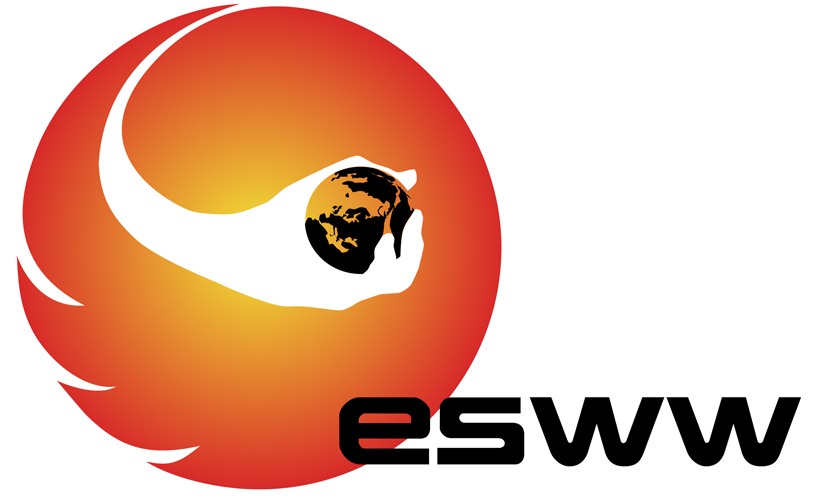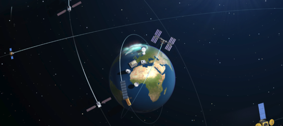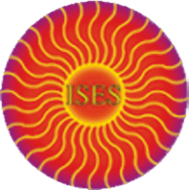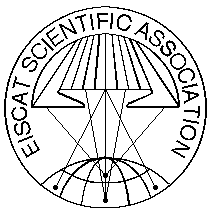
November 28 - December 02, 2011 - Namur, Belgium
Innovations and Key Challenges in Space Weather Science and Observation
| Session: | Session 1: Innovations and Key Challenges in Space Weather Science and Observation (01) |
| Type: | |
| Date: | Monday, November 28, 2011 |
| Time: | 14:30 - 18:05 |
| Chair: | Cid Consuelo & Jean Lilensten |
| Co-chair: | |
| Remarks: |
Splinter wrap-up: 15:50-16:05 Coffee Break & Poster Session: 16:05-16:50 |
| Seq | Time | Title | Abs No | ||||
| 1 | 14:30 |
How to couple Solar Events to Perturbations in the Earth's Atmosphere?
Vilmer, Nicole Observatoire Paris-Site de Meudon, FRANCE Attempting to couple solar "events" (flares, coronal mass ejections, particles) to perturbations in the earth's atmosphere is a challenging topic which requires the coordination of many data obtained through many different techniques from many instruments together with the development of models to track e.g. the propagation of mass ejections, shocks or particles in the interplanetary medium. I will present here the results of a few studies which analyzed the complete chain of events from the Sun to the Earth's atmosphere and discuss the difficulties encountered in e.g. linking the observations at the Sun to the observations at 1 AU. I will show how the STEREO observations bring new tools to better connect coronal mass ejections at the Sun with in situ measurements. I will finally discuss the input of radio observations for Space Weather studies. |
Invited | ||||
| 2 | 14:50 |
Understanding the Origin of extreme Solar energetic Particle Events using Modeling and Observations
Vainio, Rami University of Helsinki, FINLAND Large solar energetic particle (SEP) events are one of the greatest threats to humans on long space flights outside the shielding provided by the geomagnetic field. Thus, understanding their origin and properties is one of the key issues on building capabilities for manned missions, e.g., to Moon and Mars. The most energetic SEP events produce a detectable ground level enhancement (GLE) in the cosmic-ray flux indicating, that relativistic protons are produced at or near the Sun during the event. To date, 70 GLEs are observed, and the most extreme events in this class produce proton enhancements above the cosmic-ray background at energies extending up to 10 GeV and beyond. I will briefly introduce observations of some of the largest SEP events observed to date and then discuss them in terms of recent efforts to model them. Most of the emphasis will be put on models based on shock acceleration in CME-driven coronal shocks. In addition to particle observations, I will also discuss recent electromagnetic observations on shock formation to address the issue of timing of the acceleration relative to the X-ray flare. |
Invited | ||||
| 3 | 15:10 |
Space Radiation Challenges on Nanoelectronic Chips
Paccagnella, Alessandro1; Gerardin, Simone1; Ferlet-Cavrois, Véronique2 1University of Padova, ITALY; 2ESA-ESTEC, NETHERLANDS Scaling of CMOS technology has led to devices with feature
size of a few tens of nanometers. Despite the formidable roadblocks
faced during the last few years, Moore’s
law is still driving the industry towards unprecedented levels of
performance and capability. New materials and new device concepts, such
as high-k dielectrics and FinFETs, have been introduced to overcome
scaling barriers and follow the course predicted by G. Moore more than
40 years ago. Further solutions with great potential, such as 3D chips,
are being studied for the next years.
This rapid evolution has had an enormous impact on the
radiation effects community, with some issues being mitigated by
scaling, and some others being exacerbated. Overall hardness assurance
is becoming an increasingly difficult task for space designers. |
Invited | ||||
| 4 | 15:30 |
Space Weather View at Ionospheric Anomalies around the Time of Strong Earthquakes
Pulinets, Sergey Russian Academy of Sciences, RUSSIAN FEDERATION Ionosphere as one of the most sensitive media from all geospace shells of our planet is usually considered as an object of action from above: direct action of solar electromagnetic radiation, solar proton events and effects from the magnetosphere (magnetosphere-ionosphere coupling). Nevertheless, this approach failed to explain day-to-day ionospheric variability. Thermosphere-ionosphere coupling problems, which become a hot subject of recent years ionospheric studies improved the situation at least by more careful look at the neutral and ionized species exchange of energy, but still there is lack of knowledge in direct physical modeling of atmosphere-ionosphere coupling within the frame of the Global Electric Circuit (GEC) conception. The problem exists frozen for many years: there are some model calculations but mainly for the polar ionosphere where magnetospheric convection is considered taking into account the electric fields. But for low latitude and equatorial ionosphere the problem remains at the level of understanding from the middle of last century age. The strong localized ionospheric anomalies reaching the 50-100% of electron concentration in the maximum of F-layer around the time of strong earthquakes (mainly within the interval of 5 days before the main shock) intensified the studies of the problem what led to creation of the Lithosphere-Atmosphere-Ionosphere Coupling (LAIC) model. The GEC plays the crucial role in understanding the observed ionospheric anomalies. The three geophysical shells mentioned above could be considered as an open complex nonlinear system with dissipation where intensive ionization of boundary layer of atmosphere gives start to the synergetic sequence of coupling processes where the ionosphere and even magnetosphere are the last links in the chain of interactions. It should be noted that such anomalies could be generated not only before earthquakes where radon emanation from the Earth's crust is considered as a main source of ionization, but in a presence of any source of intensive ionization (nuclear power plant emergencies as an example). So the model should be named probably as Atmosphere-Ionosphere Coupling induced by ionization. The following questions will be considered: the model itself, main morphological features of seismo-ionospheric anomalies, the special techniques of anomalies identification, including geomagnetically disturbed periods, most interesting examples including the recent catastrophic Tohoku earthquake in Japan, examples of physical modeling of seismo-ionospheric effects, model verification by other sources of ionization (cases of Nuclear power reactors explosions). Effects of seismo-ionospheric anomalies on the radio waves propagation in different frequency bands will be considered as well. |
Invited | ||||
|
|
|||||||
| 5 | 16:50 |
The integrated Space Weather Analysis System
Maddox, Marlo1; Hesse, M.2; Kuznetsova, M.2; Rastaetter, L.2; Berrios, D.2; Pulkkinen, A.2; Zheng, Y.2; Mullinix, R.2; MacNeice, P.2; Taktakishvilli, A.2; Zhou, P.3; Boblitt, J.4 1NASA Goddard Space Flight Center, UNITED STATES; 2NASA GSFC, UNITED STATES; 3University Of Maryland College Park, UNITED STATES; 4Virginia Tech, UNITED STATES Access to near real-time and real-time space weather data is essential to accurately specifying and forecasting the space environment. The Space Weather Desk at NASA Goddard Space Flight Center's Space Weather Laboratory provides vital space weather forecasting services primarily to NASA robotic mission operators, as well as external space weather stakeholders including the Air Force Weather Agency. A key component in this activity is the iNtegrated Space Weather Analysis System which is a joint development project at NASA GSFC between the Space Weather Laboratory, Community Coordinated Modeling Center, Applied Engineering & Technology Directorate, and NASA HQ Office Of Chief Engineer. The iSWA system was developed to address technical challenges in acquiring and disseminating space weather environment information. A key design driver for the iSWA system was to generate and present vast amounts of space weather resources in an intuitive, user-configurable, and adaptable format - thus enabling users to respond to current and future space weather impacts as well as enabling post-impact analysis. Having access to near real-time and real-time data is essential to not only ensuring that relevant observational data is available for analysis - but also in ensuring that models can be driven with the requisite input parameters at proper and efficient temporal and spacial resolutions. The iSWA system currently manages over 300 unique near-real and real-time data feeds from various sources consisting of both observational and simulation data. A comprehensive suite of actionable space weather analysis tools and products are generated and provided utilizing a mixture of the ingested data - enabling new capabilities in quickly assessing past, present, and expected space weather effects. This paper will highlight current and future iSWA system capabilities and also discuss some of the challenges and lessons-learned in dealing with diverse real-time and near-real time space weather resources. http://iswa.gsfc.nasa.gov/ |
|||||
| 6 | 17:05 |
Study of the Astronaut's Radiation Doses during April-May 2010 "Killer" Electrons Enhancement on the ISS
Dachev, Tsvetan1; Matviichuk, Yury2; Tomov, Borislav2; Dimitrov, Plamen2; Reitz, Guenther3; Horneck, Gerda3; Donat-P., Häder4; Lebert, Michael5; Schuster, Martin5 1Space and Solar-Terrestrial Reseach Institute, Bulgarian Academy of Sciences, BULGARIA; 2Space and Solar-Terrestrial Research Institute, Bulgarian Academy of Sciences, BULGARIA; 3DLR, Institute of Aerospace Medicine, GERMANY; 4Neue Str. 9, 91096 Möhrendorf, GERMANY; 5Department für Biology der Friedrich-Alexander-Universität, Ökophysiologie der Pflanzen, GERMANY Solar and space radiation have been monitored successfully using the radiation risks radiometer-dosimeter (R3D) installed at the ESA EXPOSE-R (R) facility outside of the Russian Zvezda module of the International Space Station (ISS) between March 2009 and January 2011. The space radiation has been measured by a Liulin type spectrometer-dosimeter with a single 2 cm2 area and 0.3 mm thick Si PIN detector. The total external and internal shielding before the space radiation detector of R3DR device is 0.41 g cm-2. The calculated stopping energy of normally incident particles to the detector is 0.78 MeV for electrons and 15.8 MeV for protons. After the Coronal Mass Ejection (CME) on third of April (09:54 UTC) on fifth of April a shock was observed at the ACE spacecraft at 07:56 UTC, which led to a sudden impulse at Earth at 08:26 UTC. Never the less that the created magnetic substorms on fifth and sixth of April were moderate, one of the largest in history of GOES measurements outer radiation belt enhancement was created. The R3DR data shows a relatively small amount of relativistic electrons on 5th of April. The maximum was reached at 7th of April with 2323 µGy day-1. Till 9th of April 6,600 µGy was accumulated. Till the end of the period on 7th of May totally 11,587 µGy dose was absorbed. We measured the R3DR relativistic electron dose for the NASA astronauts Rick Mastracchio and Clayton Anderson collected during the 3 EVA on 9-13 April 2010 to be 1067 µGy or enhancement of 38.6% in comparison with other STS-131 crew members, which stayed inside the ISS. The equivalent additional dose according to R3DR data is 1170 µSv or 17.6% enhancement. Our data were compared with AE-8 MIN, CRESS and ESA-SEE1 models using SPENVIS and with similar observations on American, Japanese and Russian satellites. |
|||||
| 7 | 17:20 |
Adapting 1 AU SEP Environment Models for Interplanetary Missions
Jiggens, Piers1; Aran, Angels1; Sanahuja, Blai2; Gabriel, Stephen3; Jacobs, Carla4; Heynderickx, Daniel5 1ESA/ESTEC, NETHERLANDS; 2University of Barcelona, SPAIN; 3University of Southampton, UNITED KINGDOM; 4Katholieke Universiteit Leuven, BELGIUM; 5DH Consultancy, BELGIUM Solar Energetic Particles (SEPs) are electrons, protons and
heavier ions resulting from acceleration by phenomena originated at the
Sun. The sources of these particles are solar flares and Coronal Mass
Ejections (CMEs). The contribution of either source to an individual
SEP event is still under intensive study. In general, solar flares may
be responsible for small increases in SEPs and major increases in solar
protons result primarily from travelling shocks associated with CMEs
that are often accompanied by flaring processes. There are several
models for modelling the SEP environment at 1 AU based on measurements
made by Earth-orbiting spacecraft over the space age. Estimations of
the environment away from 1 AU have been coarse and often conservative
due to a lack of available data which can be verified. |
|||||
| 8 | 17:35 |
NARMAX Approach to the Evolution of energetic Electrons fluxes at the geostationary Orbit
Balikhin, Michael; Boynton, Richard; Billings, Stephen; Walker, Simon University of Sheffield, UNITED KINGDOM The recently published data by Reeves et al. [GRL 2011], of the electron fluxes at the geostationary orbit are subjected to an Error Reduction Ratio (ERR) analysis, in order to identify the parameters that control variance of these fluxes. It was shown that it was the solar wind density not the velocity that controls most of the variance of the 1.8-3.5MeV electrons fluxes. Under the condition of fixed density, the dependence of the fluxes upon the velocity was the following: fluxes increase with the velocity reaching some saturation level [Balikhin et al. GRL 2011]. In the present work, it was shown that for much lower energies, the solar wind velocity had the major influence, not the density, with an increasing time lag of the velocity as the energy of the fluxes increased. This increase of the time lag can be used to estimate parameters of the electron acceleration process. |
|||||
| 9 | 17:50 |
Average global and local Properties of geomagnetic Storms in 1932-2009
Mursula, Kalevi1; Yakovchouk, Olesya1; Holappa, Lauri1; Veselovsky, Igor2; Karinen, Arto3 1University of Oulu, FINLAND; 2Moscow State University, RUSSIAN FEDERATION; 3Moscow State University, FINLAND A database of local and global Dst index proxies (called Dxt indices) have been made available for 1932 onwards within the Soteria project. We investigate here the average properties of geomagnetic storms using the local Dxt indices at the four Dst stations in 1932-2009. Imposing the condition of complete data availability during storms, our study includes 1268/362/134/59 storms with Dxt minimum less than -50/-100/-150/-200 nT, respectively. The global Dxt minima were, on an average, -94/-156/-216/-275 nT, while the deepest storm-time local Dxt minima were -137/-214/-285/-350 nT. This implies that the local Dxt minima are typically some 25-30% stronger than the global Dxt minima. The distribution of largest storm-time disturbances is strongly peaked at 18 local time, challenging local midnight as the dominant ion source. Relative timing of local minima verifies that stations at earlier LT hour observe their minimum a couple of hours after the deepest minimum, in agreement with westward drift of ions. Storm-time maximum asymmetries were found to increase with storm intensity level from about 70 nT to 150 nT for -50 to -200 nT storms. However, strong storms are relatively more symmetric than weak storms when compared to the typical level of local disturbance. During individual storms the asymmetry can be more than 200 nT. The rate of evolution of storm-time asymmetry is found to be roughly twice faster for large storms. We emphasize that the unique database of local Dxt indices proves to be very useful in studying the average spatial distribution and temporal evolution of storms. Instead, using the global Dxt/Dst index as the only measure for storm intensity and other properties may lead to severe underestimation of significant local and global effects. |
|||||











